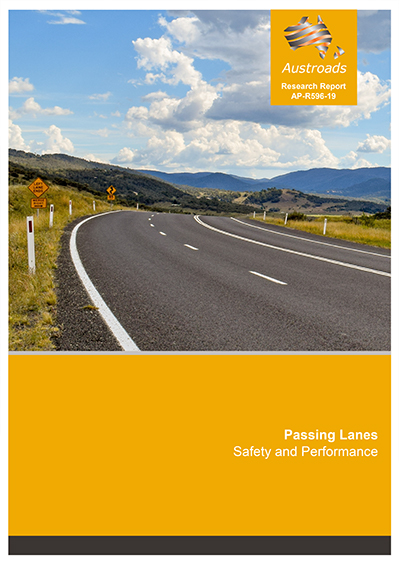Wednesday, 16 January 2019

Austroads has published a report that provides guidance in the development of passing lane installation projects by examining their impacts on safety, journey time and user experience.
Passing lanes are provided to break up traffic platoons and improve traffic flow over a section of road. They provide an overtaking opportunity and are sometimes the only practical chance for overtaking to occur.
This Austroads project was designed to establish the benefits associated with passing lanes to provide guidance to practitioners.
The report covers
- the key findings from a literature review
- safety analysis, including before-and-after analysis of crash records, speed and headway analysis, and overtaking behaviour analysis
- journey time analysis, including development of modelling guidance and numerical experiments on the impact of passing lanes on travel speed and per cent time spent following
- road user experience survey, including an analysis of perceptions and valuation of level-of-service.
Passing lanes result in safety benefits, including perceived safety by motorists, safer operational conditions, and crash reductions. Before-and-after crash analysis of routes where passing lanes were installed showed an average reduction of injury crashes by 16%.
Literature on the safety impacts of passing indicates a degree of consensus that passing lanes contribute to the improvement of safety. Injury crash reduction as a result of passing lane installation ranged from 20% to 40% across the documents reviewed.
Passing lanes improve journey times through a small increase in travel speed and a significant reduction in the proportion of time spent following a slower vehicle. Platooning behind a slow vehicle is a cause of frustration amongst motorists.
Literature demonstrated that motorists consider passing lanes effective and beneficial. A survey of motorists indicated that for the journey experience to be generally acceptable, the per cent time spent following a slow vehicle should be limited to 30% to 40%. Motorists were also found to attach a value to per cent time spent following of approximately $4 per 100 vehicle-km travelled for every 10% improvement in time spent following.
To assess journey time impacts of passing lanes, numerical experiments were conducted using the traffic simulation model TRARR (or TRAffic on Rural Roads). The TRARR model was reviewed and its parameters were re-calibrated to match current vehicle fleet and recent field data.
Report link: Passing Lanes: Safety and Performance
Webinar link: Passing Lanes: Safety and Performance
